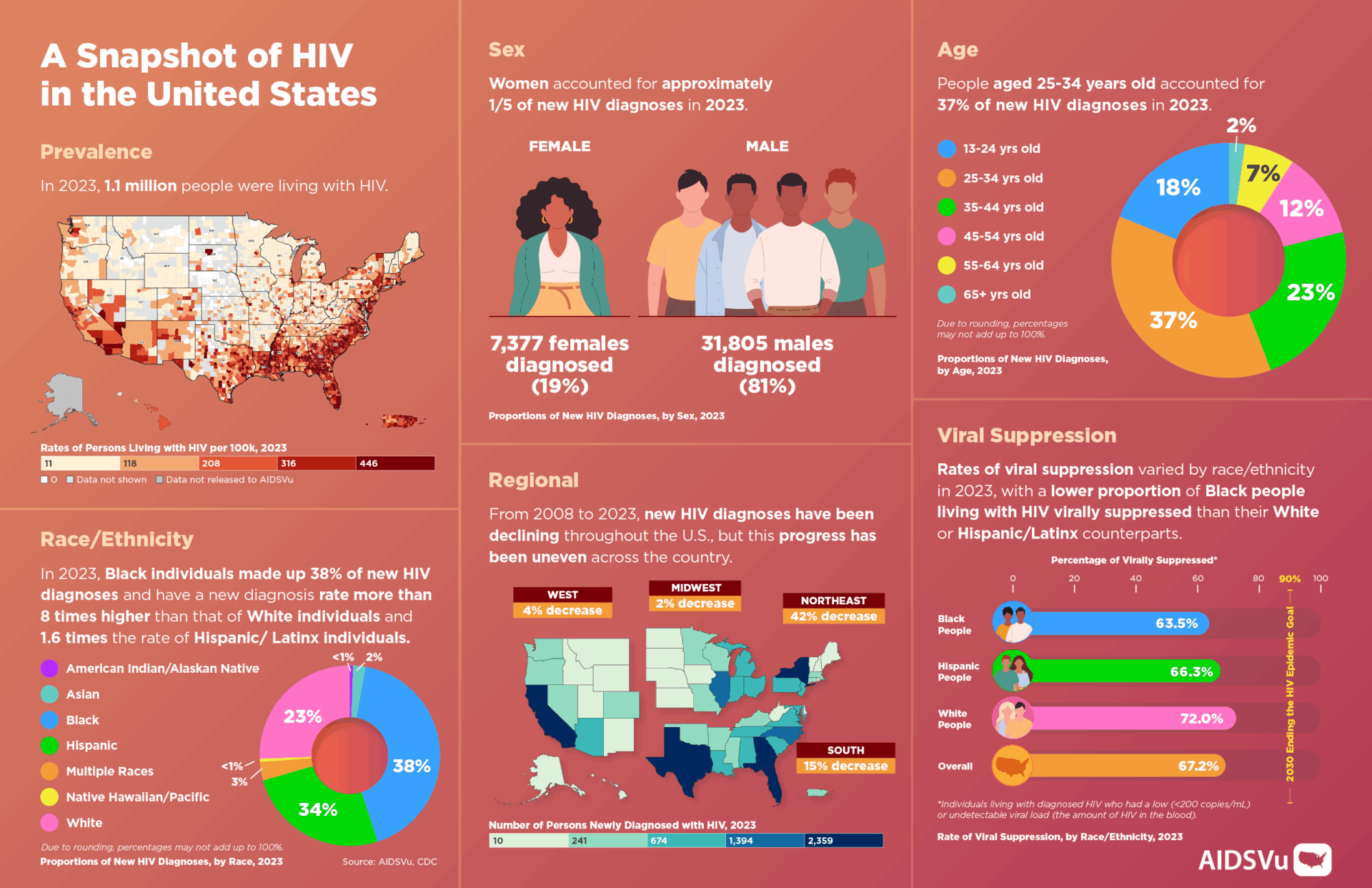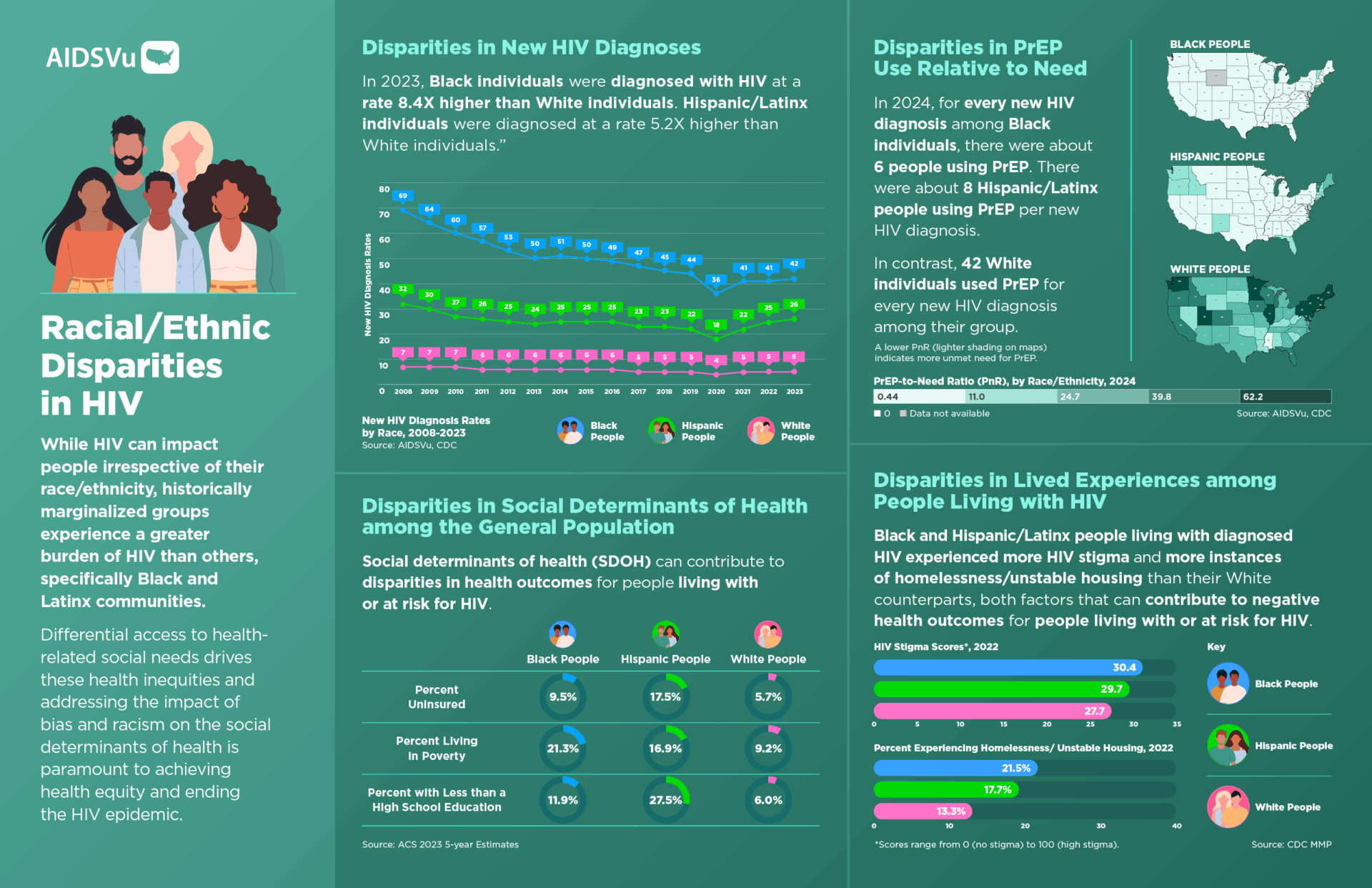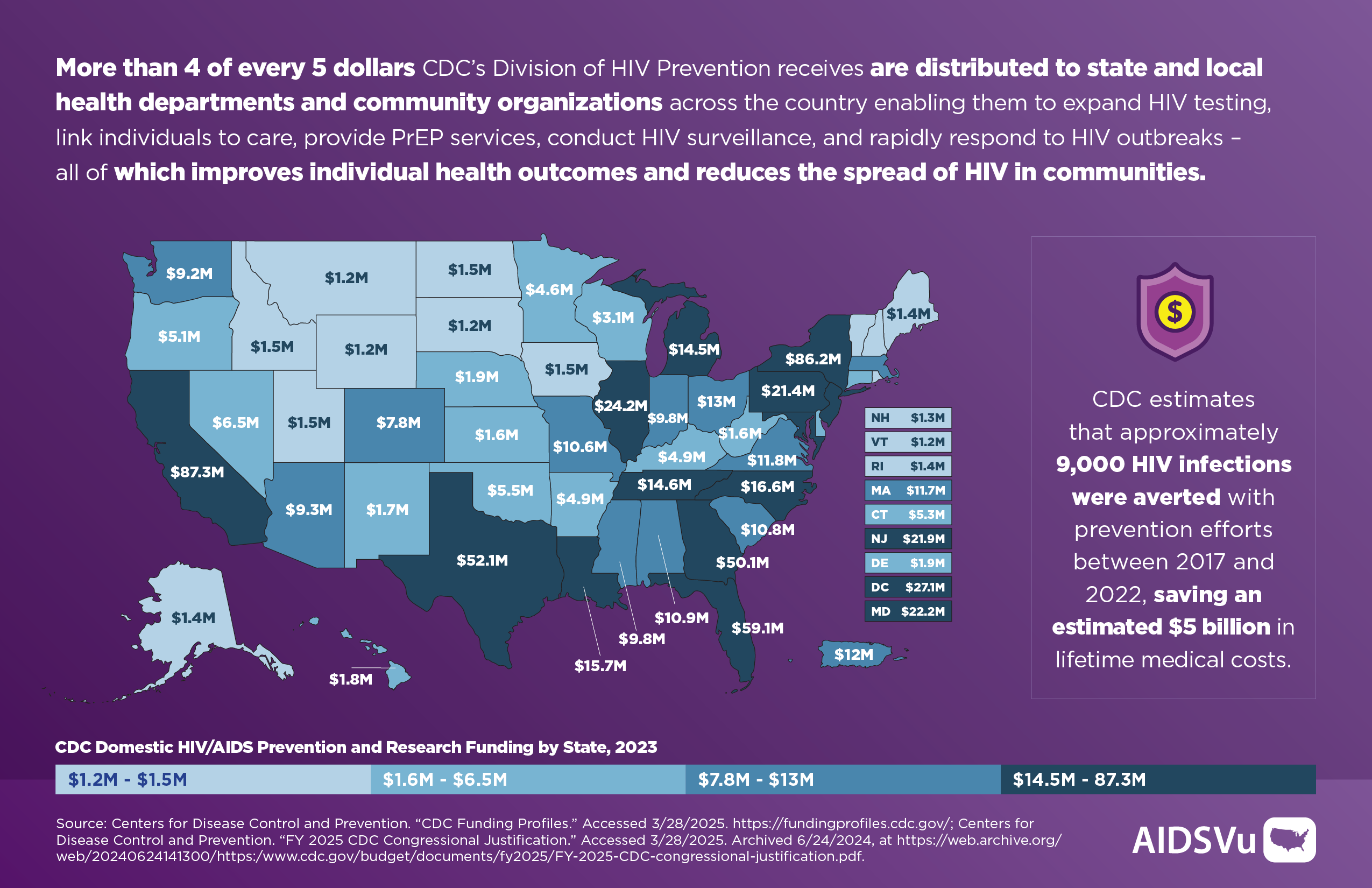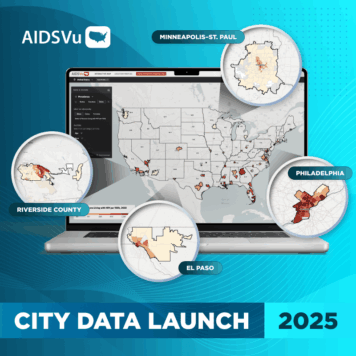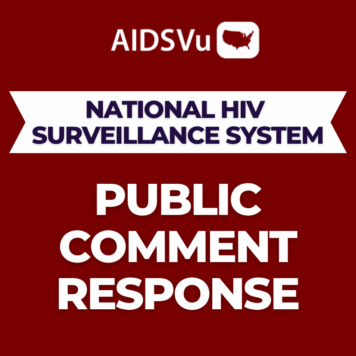Today, AIDSVu released its annual update of interactive maps and data visualizations, highlighting the latest national, state, and local insights into the HIV epidemic. The launch incorporates 2023 HIV surveillance data and resurfaces the summer launch of 2024 PrEP use data, offering essential data and tools for policymakers, researchers, and community leaders committed to ending the HIV epidemic in the U.S.
Sustained federal funding for HIV surveillance, prevention, and care is critical to preserving the progress made in reducing new diagnoses and improving health outcomes for people living with HIV. Investments in surveillance ensure timely and accurate data to track the epidemic and guide resources where they are most needed, while funding for HIV care supports linkage to care, retention in care, and viral suppression—all essential to ending the epidemic. Robust evidence shows that greater PrEP use leads to fewer new HIV diagnoses and lowers long-term healthcare costs. Yet, vital federal HIV prevention funding is facing potential reductions. These funds are essential for ensuring access to PrEP and other prevention services nationwide, supporting efforts such as community outreach, HIV testing, education, and linkage to care.
Without these resources, the nation risks losing ground, widening inequities, and undermining decades of progress toward ending the HIV epidemic.
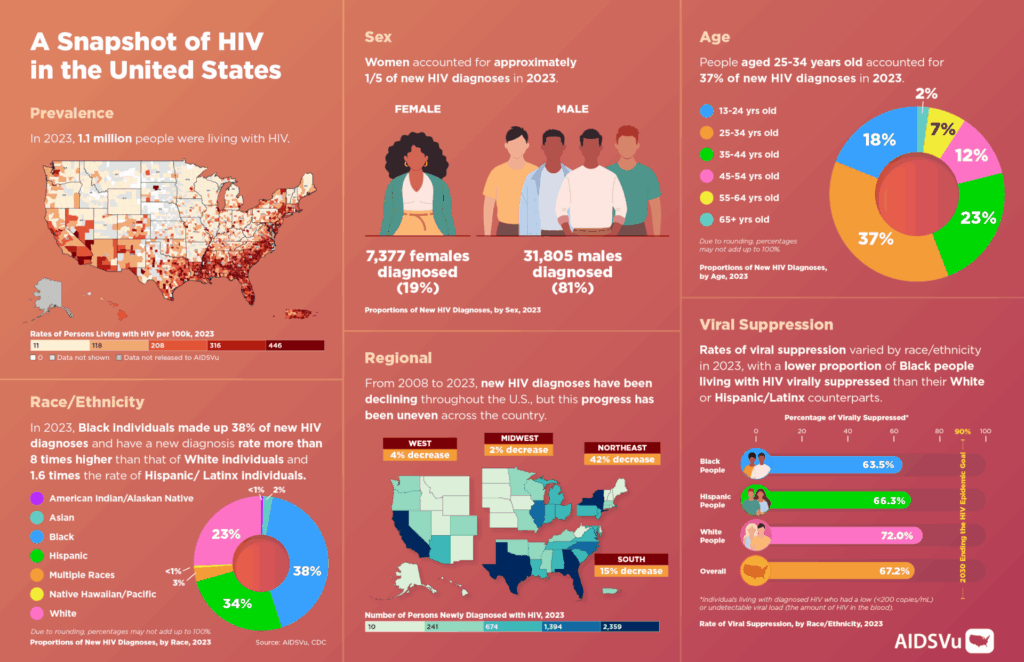
Key Findings from the Annual Data Update
- In 2023, more than 1.13 million people were living with HIV in the U.S., with those aged 55–64 comprising the largest affected group (26%).
- Racial disparities endured in 2023: Black individuals represented 39% of those living with HIV, despite comprising just 12% of the U.S. population. The HIV prevalence rate for Black individuals (1,245 people with HIV per 100,000 population) was 7× higher than that for White individuals (180 per 100,000).
- Also in 2023, there were 39,182 new HIV diagnoses, marking a 17% decline since 2008. Yet, disparities persist—Black individuals accounted for 38% of new diagnoses, facing rates more than 8× higher than White individuals (42 new HIV diagnoses vs. 5 new HIV diagnoses per 100,000 population).
- The PrEP-to‑Need Ratio (PnR) rose to 15.1 in 2024, up 52% since 2021 (9.9), indicating that there were 15 PrEP users for every new HIV diagnosis. Still, in 2024, White individuals’ PnR (41.7) was over 7× higher than that of Black individuals (5.8). A lower PnR indicates more unmet need for PrEP.
- Care continuum outcomes in 2023: 82.8% of newly diagnosed individuals were linked to care, 76.3% of people living with diagnosed HIV received care, and 67.2% of people living with diagnosed HIV achieved viral suppression.
- In 2023, the South accounted for 51% of all new HIV diagnoses, representing the region with the greatest number of new HIV diagnoses. The South also has 8 of the 9 states with the highest new diagnosis rates; 9 out of the 10 Ending the HIV Epidemic (EHE) counties with the highest new diagnoses rates were also in the South.
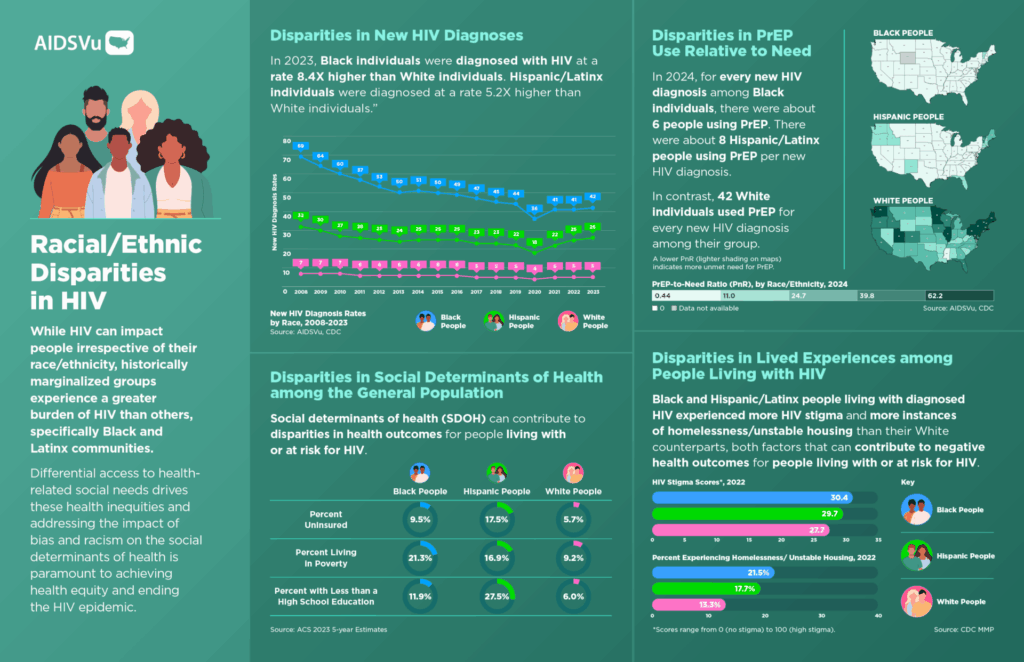
Federal HIV Funding: Pillar of Prevention Under Threat
Over 80% of the CDC’s HIV prevention funding supports state and local health departments—forming the backbone of the Ending the HIV Epidemic initiative. This funding supports essential activities, including HIV testing, linkage to care, PrEP access, disease monitoring, outbreak response, partner services, and harm reduction. Without this funding, states will face significant challenges in providing these services and new HIV diagnoses will likely increase as a result.
Emerging threats to federal HIV funding pose severe risks:
- Activists and experts warn that proposed Medicaid and CDC budget cuts—targeting nearly $1.5 billion—could reverse years of progress by disrupting HIV testing, prevention and care services across communities.
- A statement from the Partnership to End HIV, STD, and Hepatitis stresses that federal funding is foundational—without it, states cannot maintain prevention momentum, and the country faces potential HIV resurgence.
“Today’s data reveal both progress and persistent challenges,” said Dr. Patrick Sullivan, Professor of Epidemiology at Emory University’s Rollins School of Public Health and Principal Scientist for AIDSVu. “While HIV diagnoses have declined overall, the epidemic continues to disproportionately affect Black and Hispanic/Latino communities. To truly end HIV, we must dismantle systemic barriers, including preserving—and strengthening—federal funding for HIV prevention, treatment and care.”
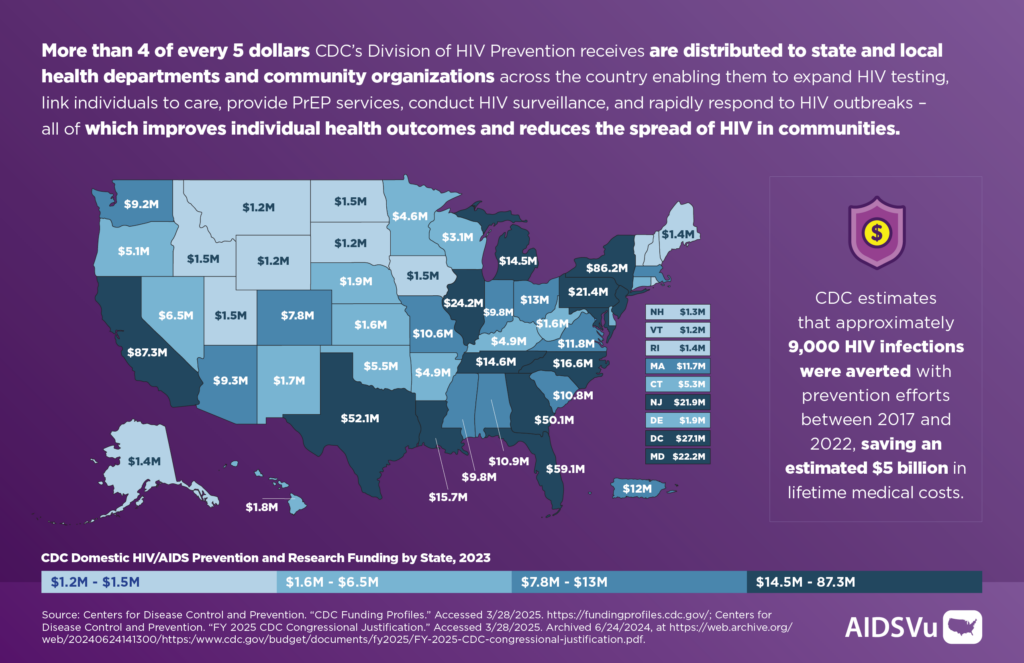
Groundbreaking PrEP Analyses from the AIDSVu Team
A study recently published in The Lancet HIV reveals that U.S. states with the highest pre-exposure prophylaxis (PrEP) coverage experienced a 38% drop in new HIV diagnoses from 2012 to 2022, while states with the lowest coverage saw a 27% increase. This is the first comprehensive, decade-long analysis to show the population-level impact of PrEP, a medication proven to prevent HIV infection. The findings underscore PrEP’s critical role in the federal Ending the HIV Epidemic initiative, demonstrating its effectiveness not only for individuals but also for reducing new infections and healthcare costs across entire communities.
AIDSVu’s Recent Updates:
Earlier this summer, AIDSVu published updated PrEP data for 2024 and updated PrEPVu.org, a new PrEP equity platform dedicated to shedding light on PrEP disparities by race/ethnicity, sex/gender, age with details on access, and stigma. AIDSVu also continues to share the PrEP-equity focused newsletter, PrEPVu Monthly, that highlights important developments in PrEP research, news, and policy each month. The available PrEP data on AIDSVu and PrEPVu can help bring attention to PrEP trends across the U.S. and inform policies to increase PrEP access and awareness in underserved communities.
About AIDSVu’s Annual Data Update:
AIDSVu is presented by Emory University’s Rollins School of Public Health in partnership with Gilead Sciences, Inc. and the Center for AIDS Research at Emory University (CFAR). Now in its fifteenth year, AIDSVu continues to advance its mission to make HIV data widely available, easily accessible, and locally relevant to inform public health decision-making and action. The site aims to provide researchers, policymakers, and community members with a more comprehensive understanding of the HIV epidemic at the local-, state-, and national- level.
State- and county-level data displayed on AIDSVu were obtained from the Centers for Disease Control (CDC) and compiled by researchers at the Rollins School of Public Health. ZIP Code data were provided by state and city health departments and compiled by researchers at the Rollins School of Public Health. To learn more about AIDSVu’s HIV data and sources, see our FAQs and Data Methods.

